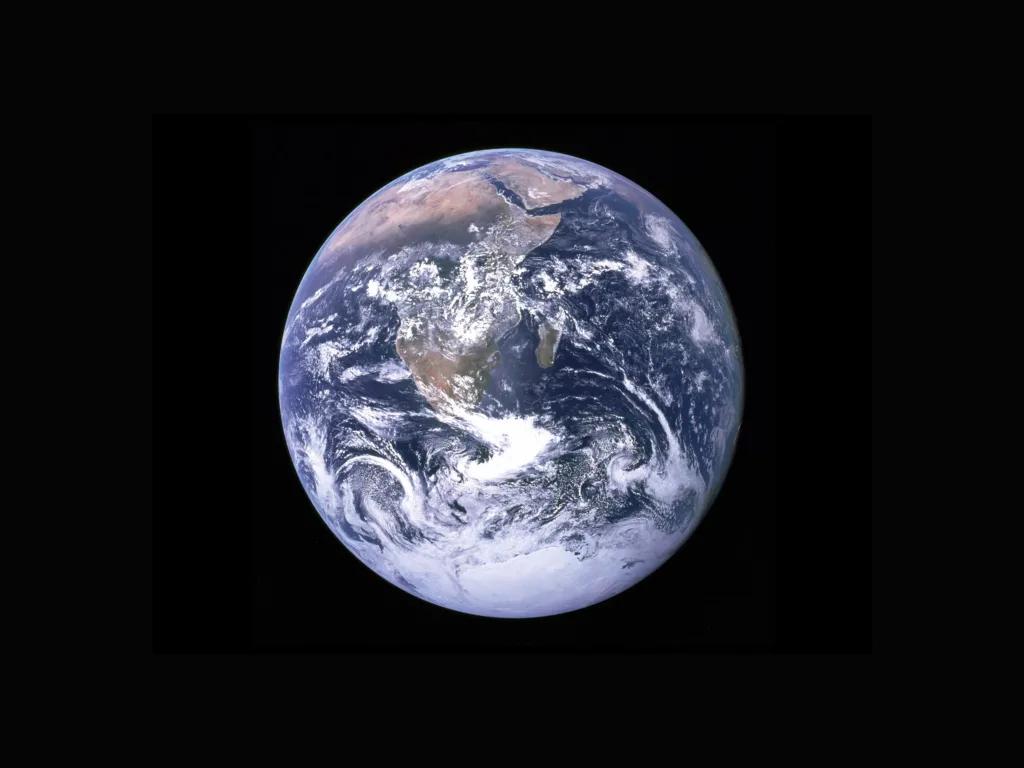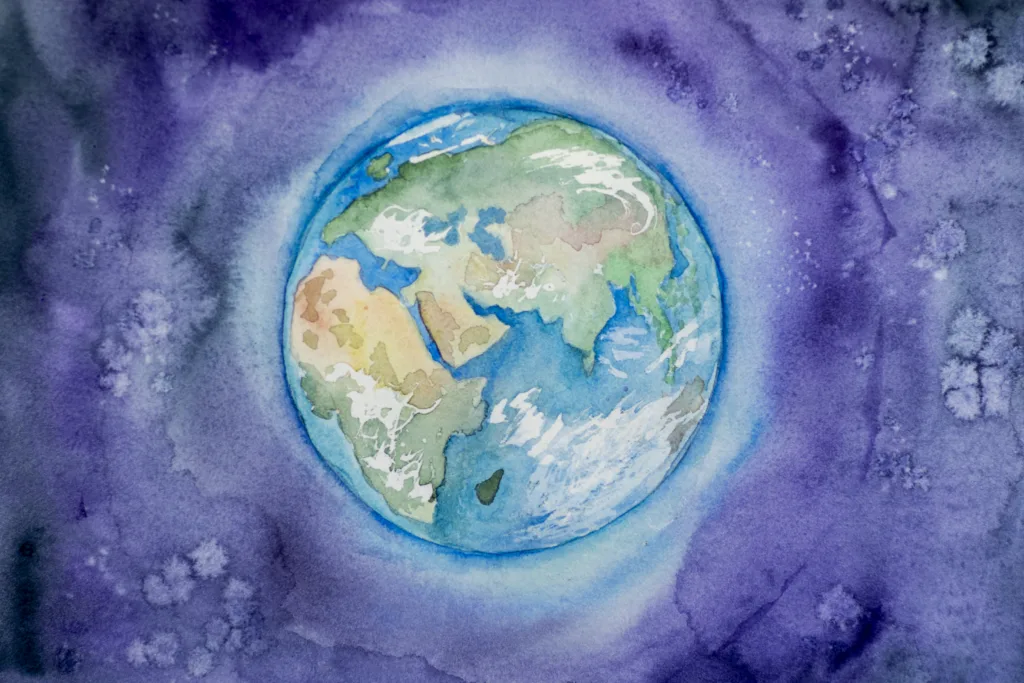Have you ever wondered what the diameter of Earth is? It’s an interesting question that we can answer using a few simple calculations.
The average diameter of Earth is 12,756 kilometers (7,918 miles). This is calculated by doubling the radius of Earth, wich is 6378 km (3,963 miles). The radius and diameter are measurements of how wide Earth is from one side to the other.
However, due to its slightly flattened nature, the exact diameter varies depending on where you measure it. For example, at its equator, the diameter increases to 7930 miles (12,854 km), while at its poles it decreases to 7900 miles (12,742 km). This means that when measuring around its circumference – or the distance it takes to travel all around the planet – we get a figure of approximately 25000 miles (40235 km).
Earth’s crust also varies in thickness depending on where you measure it. In continents it can range between 35 and 70 kilometers (22 and 44 miles), while in ocean basins it ranges between 5 and 10 kilometers (3 and 6 miles).
So there you have it! Now you know all about the diameter of Earth.
What is the True Diameter of Earth?
Earth’s true diameter is not an exact figure, as the Earth is not a perfect sphere. Its equatorial diameter is 12,756 km, while its polar diameter is slightly smaller, at 12,714 km. This difference occurs due to the fact that the Earth is slightly flattened at the poles, with a polar radius of 6357 km compared to an equatorial radius of 6378 km.

The Diameter and Circumference of the Earth
Earth’s diameter is approximately 7930 miles from the equator and 7900 miles from the north to south poles. Its circumference is calculated by multiplying its average diameter, 7915 miles, by the number pi (3.14159). This gives us a circumference of about 25,000 miles.
The Thickness of Earth in Miles
Earth’s crust varies in thickness from 22 to 44 miles in the continents and 3 to 6 miles in the ocean basins. The average thickness of Earth’s crust is approximately 37 miles, although this can vary depending on the location.
Composition of Earth
Earth is made up of three main layers: the crust, the mantle and the core. The outermost layer, the crust, is a thin solid layer of rock that is mainly composed of basalt and granite. This layer can be divided into two types: oceanic and continental. Oceanic crust is denser and thinner than its counterpart, continental crust, which is thicker and composed of a variety of igneous, metamorphic and sedimentary rocks. Beneath this solid layer lies an incredibly hot semi-solid layer called the mantle. This layer ranges from 100 to 200 km thick and is composed of magma, which consists mainly of iron-rich silicate minerals such as olivine and pyroxene. The deepest layer of Earth is the core, which has two parts: a liquid outer core made up mostly of iron-nickel alloy and a solid inner core made up primarily of pure iron.
Estimating the Age of Earth
Earth is estimated to be around 4.54 billion years old, with a margin of error of about 50 million years. This estimate is based on the age of the oldest known rocks found on Earth, which were discovered in northwestern Canada and are approximately 4.03 billion years old. By dating these rocks using radiometric techniques, scientists have been able to accurately determine the age of our planet.

Source: universetoday.com
The Meaning Behind the Name Diameter
The term ‘diameter’ comes from the Greek word ‘diametros’ which means ‘across’ or ‘measured across’. This speaks to the fact that a diameter is a straight line that passes through the centre of a circle, connecting two points on its circumference. The length of this line is measured from one point to the other, and is therefore ‘measured across’. Hence, it is referred to as a diameter.
Length of the Equator
The equator is the invisible line that circles the Earth, dividing our planet into the Northern and Southern hemispheres. Its total length is 40,075 kilometers (24,901 miles). This circumference can be measured by starting from any point along the Equator and traveling around the world until returning to that same point. Much like a circle, this journey takes you along a curved line that winds its way through countries, cities, and even across oceans. As you travel along this line, you are essentially measuring Earth’s widest point – making it all the more impressive that it is just 40,075 kilometers long!
Diameters of Earth
The Earth has two diameters: an equatorial diameter of 12,756 km (7926 mi) and a polar diameter of 12713.6 km (7899.86 mi). Objects located along the equator are about 21 km further away from the center of the Earth (geocenter) than objects located at the poles. This difference in distance is what gives rise to the two different diameters for our planet.
How Deep Can We Drill Into the Earth?
Currently, the deepest artificial point on Earth is the Kola Superdeep Borehole SG-3, which was drilled in 1989 to a depth of 12,262 metres (40,230 ft) below the surface. This is an incredible feat given that drilling technology and materials have advanced significantly since then. Nonetheless, this record has not been surpassed since. Moreover, due to the increasing pressure and temperature at greater depths, it is increasingly difficult to drill deeper. Therefore it is unlikely that we will be able to drill further into the Earth any time soon.
Is the Earth’s Core Hotter Than the Sun?
The answer to the question is: yes, the core of the Earth is hotter than the surface of the Sun. At its center, the temperature of the Earth is estimated to be around 6000 degrees Celsius, which is about 9% hotter than what exists on the surface of our star. This hot core is generated by a combination of residual heat from when our planet formed 4.5 billion years ago, as well as heat from radioactive decay and friction from seismic waves travelling through its interior.

The Maximum Depth of Drilling Into the Earth
The deepest penetration of the Earth’s solid surface to date is the Kola Superdeep Borehole on the Kola peninsula of Russia, which reached a depth of 12,262 metres (40,230 ft). This impressive feat was achieved usng special drilling rigs with diamond-tipped drill bits. The German Continental Deep Drilling Program has also demonstrated that it is possible to drill deeper than 9.1 kilometres (5.7 mi) into the Earth’s crust. However, due to a variety of geological, structural and technological factors, drilling any deeper than this would be extremely difficult and expensive. Furthermore, it has been suggested that temperatures and pressures increase significantly at depths greater than 10 km, making further drilling very challenging. Therefore, while it is technically possible to drill deeper than 10 km into the Earth’s interior, it is unlikely that anyone will attempt such a feat any time soon.
Conclusion
In conclusion, the diameter of the Earth is approximately 12,756 km and its circumference is approximately 25,000 miles. The Earth’s crust varies in thickness from 35 to 70 kilometers in the continents and 5 to 10 kilometers in the ocean basins. Despite being almost a perfect sphere, its equatorial radius is 6378 km while its polar radius is 6357 km, making the Earth slightly flattened.
